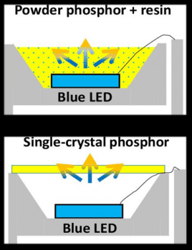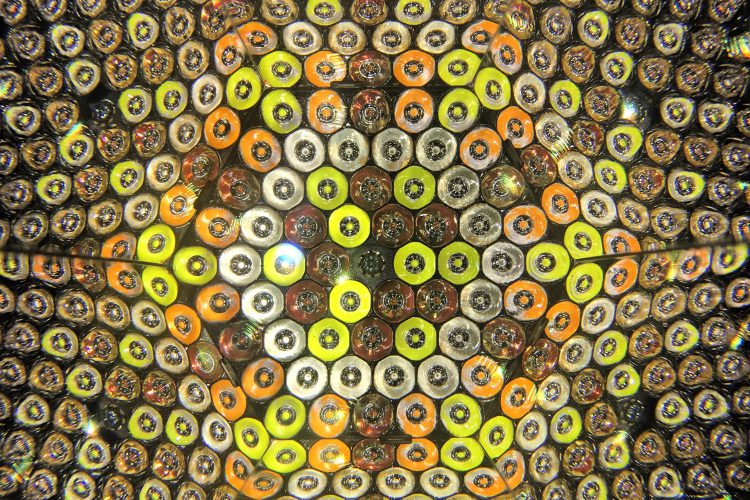In this series, we’ll touch on some of the most frequently asked questions we receive about LEDs. The insights in parts 1 and 2 are brought to you by ETC’s Outreach and Training Specialist Tom Littrell. Stay tuned for more from Color Specialist Wendy Luedtke in parts 3 and 4.
What is LED binning and why is it so important? Before we get to that, a basic understanding of how an LED is made will illuminate why binning is a critical part of the manufacturing process.
An LED is a “Light Emitting Diode.”
First, what’s a diode? A diode is an electronic component which allows current to pass through in one direction, but not the other. A solid-state diode is made of layers of different types of silicon. But diodes don’t ordinarily emit light.
So, what turns a diode into a Light Emitting Diode? Well, when you pass electricity through them, certain obscure substances and compounds glow. In other words, they emit light. Indium and gallium and nitride when mixed together emit a blue-ish light. Aluminum and indium and gallium make a red-ish light.
If you mix different ‘recipes’ of these electroluminescent bits – referred to as ‘impurities’ – into the layers of solid-state diodes and pass electricity through the mix you get – guess what? A Light Emitting Diode – an LED.

Varying different recipes of ‘impurities’ works great for creating different colors – part of the time – but isn’t great at making all colors. Yellow, for example, is tough to make with a recipe of ‘impurities.’ So, LED technology has developed ‘phosphor-converted’ LEDs. Blue LEDs are used as a light source. These are occasionally referred to as the ‘blue pump.’ Then, specific phosphor mixes are placed on top of the blue emitters to create the desired color.
LEDs created through phosphor conversion provide a more stable color, and offer a broader range of colors in some parts of the spectrum. For example, a phosphor-converted amber is prettier than a natively-produced amber. As time goes on, this method of LED development will likely become dominant in LED manufacturing.
Let’s make LEDs
When LED manufacturers actually make a batch of LEDs, they precisely layer required materials onto a wafer, which is then baked in an oven. These wafers are typically two to eight inches in diameter. Manufacturing techniques are constantly being researched and improved, and all of these procedures are highly proprietary to LED makers.
Despite the high level of precision in producing LEDs, results still vary ever so slightly from wafer to wafer. Just like a batch of chocolate chip cookies, wafers do not come out of the oven precisely uniform.
In our industry, precise color quality is highly important so there needs to be a system that ensures color consistency. If you buy a set of LED fixtures in January and decide to order more in July, you’ll obviously want your LED arrays to match.
This is where binning comes in. After baking, each individual emitter is evaluated for different characteristics. Then, the emitters are separated and ‘binned’ or sorted based on this evaluation. These characteristics include, but are not limited to, color and intensity.

The above illustration demonstrates the concept. In this case, blue LEDs might range from 460 to 480 nanometers. They are sorted into five bins of five nanometers each. A manufacturer will buy from the bin or group of bins that best suits their needs.
However, the organic nature of LED production means that yields are not totally predictable. This, coupled with the realities of demand and parts availability, means that specific bins of a specific LED color might not be available at all times.
ETC works closely with emitter vendors to maintain a robust stock of specific LED bins to create consistent and high quality fixtures. This close relationship also means that we stay up to date with manufacturing changes and trends—enabling us to deliver the most innovative LED solutions for entertainment and architectural applications.





